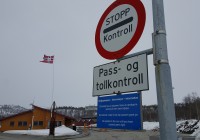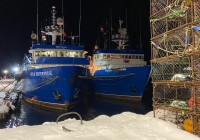
Substantial expansion of trout farming in cooling water of Kola nuclear power plant
ADVERTISEMENT
No fear of radiation, although the new egg- and fry plant, the fish farming nets and production facilities are inside the sanitary protection zone of the Kola NPP.
Warm water coming from cooling the four reactors at Kola NPP keeps the several square kilometers of Lake Imandra ice-free year-round, even in freezing mid-winter here above Russia’s Arctic Circle.
For years, a small fish farm has existed for trout and even a few sturgeon so the employees of the nuclear power plants can have their private black caviar.
Now, the Kola NPP teams up with Russkiy Losos (Russian Salmon), the fish farmer company that produces close to 20,000 tons of salmon and trout in Liinakhamari in the Pechenga fjord on the Barents Sea coast.
The Russians have until now been completely dependent on smolt supply from Norway for fish farming on the Kola Peninsula.
Investments for expanded production amount to 1-2 billion rubles (€10 to 20 million), Rosatomenergo, the state-owned corporation operating Kola NPP says in a press release.
“Fish farming has always been of great importance for the Kola Peninsula. We are pleased to become partners in a new and promising project for this industry,” said Kola NPP director Vaily Omelchuk.
ADVERTISEMENT
“I’m especially pleased that we will be raising Russian fish because the smolt and caviar were produced here in Russia,” he added.
The press release continues by praising Russia’s policy of “creating technological sovereignty and increasing import substitution.”
“The qualification of our specialists allows the country to quickly develop new vacated areas, where it is possible to develop our own to replace foreign technologies.”

On the shores of Lake Imandra, the new facilities will cover an area of 2,5 to 3 thousand square meters.

In 2014, Russia sanctioned the import of Norwegian salmon, but not smolt and fish farming technologies.
The boost of own production along the Barents Sea coast, however, was hampered as diseases broke out in over-filled cage nets. Thousands of tons of dead fish, bankruptcies and billions of rubles in lost investments put the industry on its knees in the year 2015.
ADVERTISEMENT
The Barents Observer Newsletter
After confirming you're a real person, you can write your email below and we include you to the subscription list.






